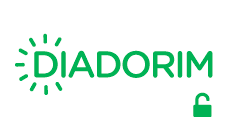Submissions
Submission Preparation Checklist
As part of the submission process, authors are required to check off their submission's compliance with all of the following items, and submissions may be returned to authors that do not adhere to these guidelines.- The contribution is original and unpublished, and is not currently under review for publication by any other journal. Should this not apply, a justification is provided in the “Comments to the Editor” section.
- The submission file is in Microsoft Word, OpenOffice, or RTF format.
- URLs for references have been provided whenever possible.
- The text is in 1.5 cm line spacing; using a 12-point font. Italics are used instead of underlining (except for URLs). Figures and tables are inserted in the text, not at the end of the document as attachments.
- The text adheres to the style guidelines and bibliographic requirements outlined in the Author Guidelines on the About the Journal page.
- Authors may submit only one article per issue.
- All authors and co-authors must be registered with the journal.
Articles
Standard section policy
Miscellaneous
Standard section policy
Copyright Notice
Copyright Statement
By submitting material for publication, the author(s) automatically declare that the work is their own and assume full responsibility under Law No. 9610 of February 19, 1998, in the event of plagiarism or defamation. The author(s) are also responsible for the originality of the work, including all citations, transcriptions, the use of names of individuals and places, historical and bibliographical references, and any other content incorporated into the text. As such, the Gláuks Journal team, as well as its editorial bodies, are hereby exempted from any responsibility.
The author(s) retain ownership of the copyright to their text(s) but grant the Gláuks Journal team the right to review, edit, and publish the text. The editorial team may suggest changes as necessary
The author(s) further declare that their text is not subject to any legal liabilities or existing editorial contracts that would prevent its publication in Gláuks Journal, and that they are responsible for any future claims or damages arising from the publication. The submitted material must be unpublished and must not be under review by any other journal(s) during the evaluation process.
By submitting material to Gláuks Journal, the author(s) agree fully with these terms and the Guidelines for Preparing and Submitting Works. Failure to comply with these terms or with the editorial guidelines will result in the rejection of the submission.
Privacy Statement
The names and addresses provided in this journal will be used exclusively for the services provided by this publication, and will not be made available for other purposes or to third parties.













